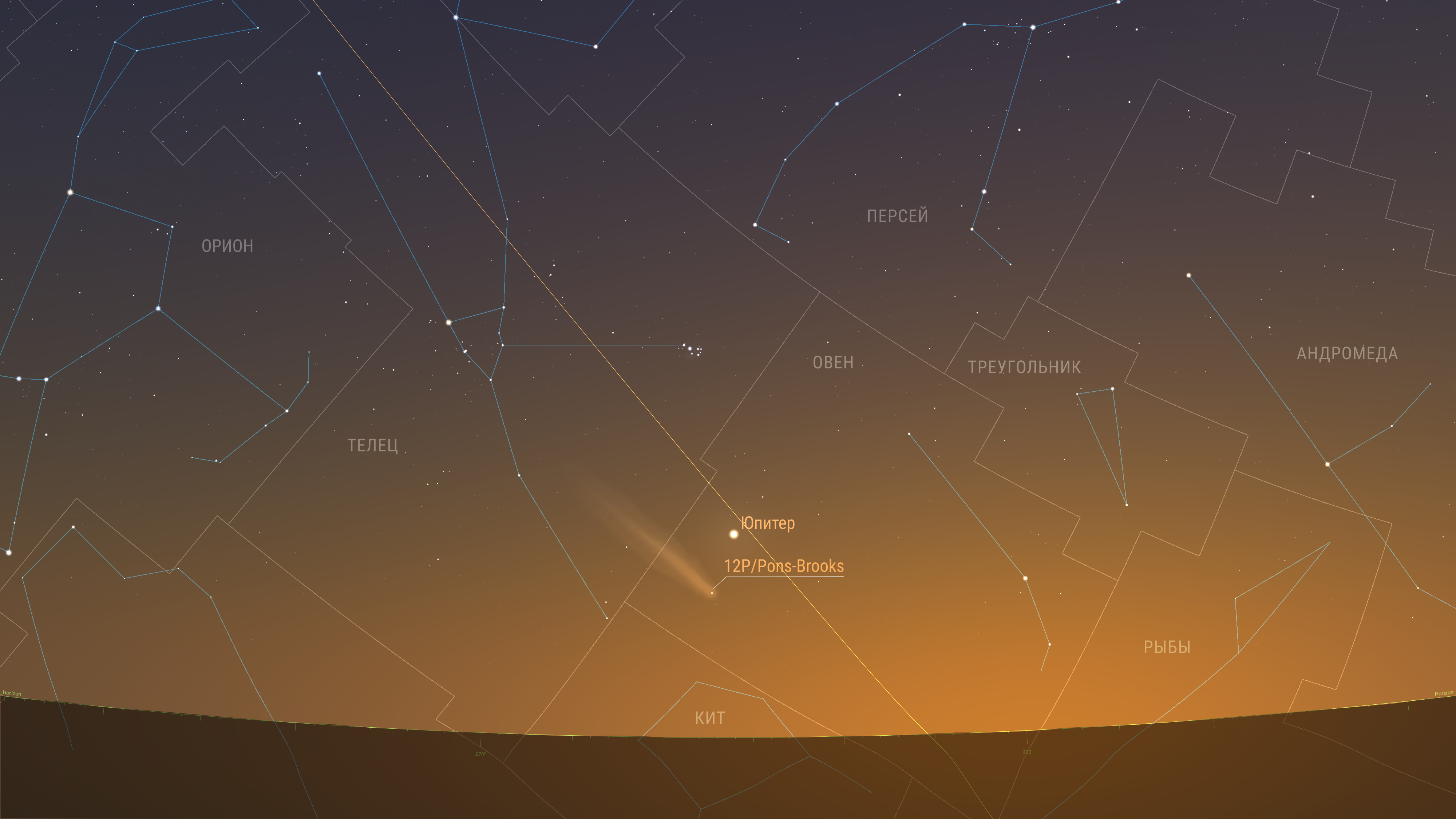Comet 12P
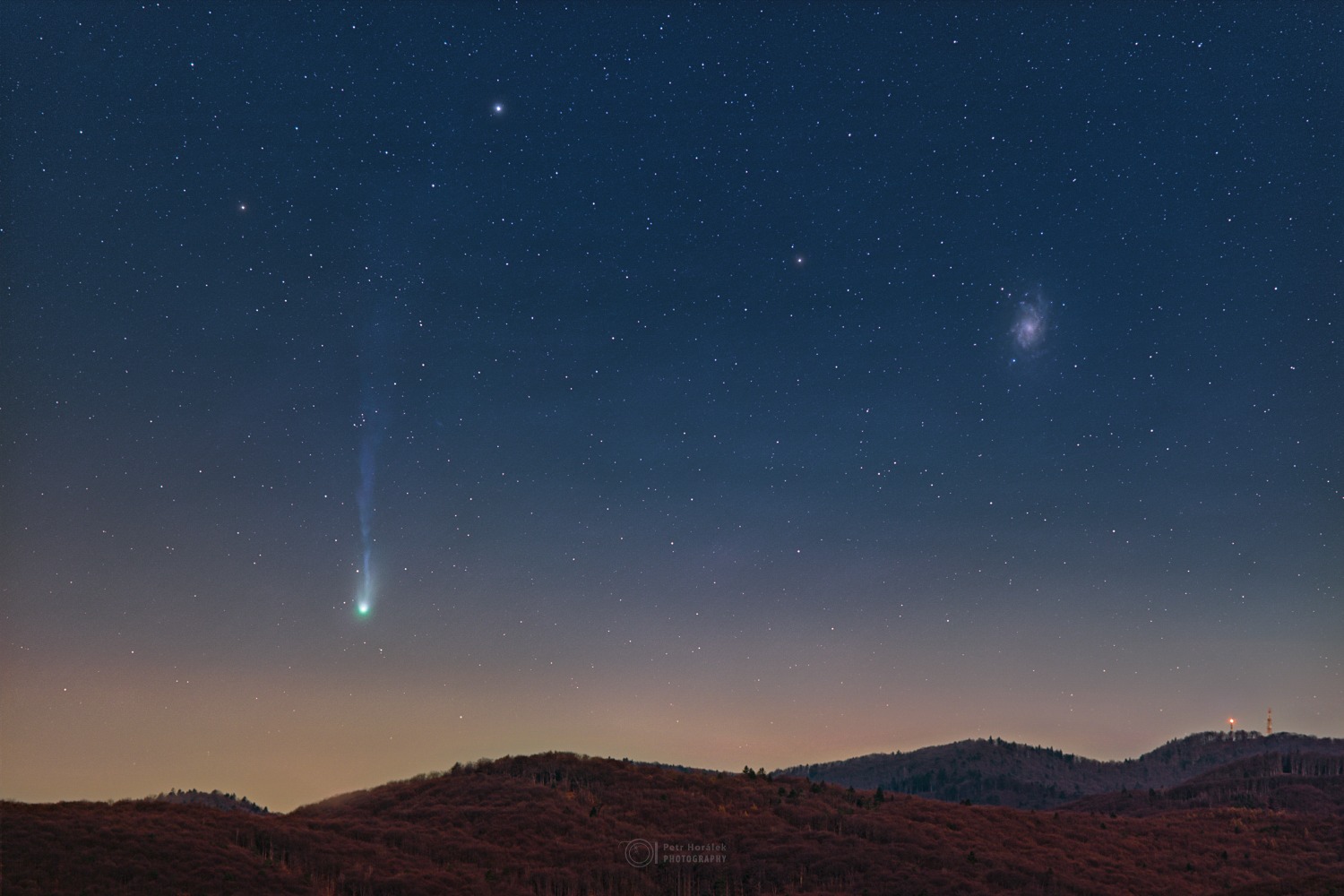
The best time to observe this visit of comet Pons-Brooks has already passed – in March 2024 (if we talk about the territory of Russia and neighboring states). In April, the comet will hardly be satisfactorily visible in the northern hemisphere of the Earth. In the southern hemisphere, its visibility conditions are noticeably better, especially given the fact that on April 21 the comet passes the perihelion of its orbit.
I have already told you almost everything interesting about the comet itself in first part of the review. But there is something to add to this.
The names indicated in the name of the comet are very significant in astronomy.
Monsieur Jean-Louis Pons is an employee of the Marseille Observatory (and later its director) and to this day is the leader among comet catchers who hunted tailed pages visually. He has 37 discovered comets. Comet Pons-Brooks is one of those captured by Pons.
This happened on July 12, 1812. At that time there was no Internet, and the urgent mail itself was pigeon (and it is unlikely that pigeons were used to deliver scientific correspondence). Therefore, the world did not immediately learn about the discovery of this comet. In Russia, for example, no one knew anything about the new comet until early August, when it was independently discovered by Vincent Vishnevsky. This, of course, does not surprise anyone. But even in France – after Vishnevsky – on August 2, the comet was discovered by Alexis Bouvard – without knowing anything about it.
Now it’s enough just to go to a special website and find out – “Is the object I am observing really unknown to anyone?”
But no one can predict how long the corresponding scientific sites will open in Russia.
Be that as it may, the glory went to Pons alone. Observations by other astronomers were considered secondary.
At maximum, the brightness of the comet was average – about 4th magnitude, and observations were carried out until the late autumn of 1812 – quite enough to determine the exact orbit. But for some reason this was not done. The calculations of different astronomers varied greatly. According to the results of some, the return of the comet should have been expected in 65 years, while others pushed its next perihelion 10 years further into the future.
Johann Encke was the closest to the truth, according to whose calculations the comet's orbital period should have been 70 years and 8 months.
There is a comet Encke. But the outstanding German astronomer of his era, Johann Franz Encke, did not discover it. This unique comet – with the shortest known orbital period – only 3 years and 4 months – was also discovered by Monsieur Pons. But Encke calculated the comet's orbit. And Pons proposed naming the comet in honor of the scientist who put a lot of effort into identifying it. The scientific community unanimously accepted this proposal. But the modest Encke, until the end of his days, called this comet the Pons comet, not considering himself worthy to share his name with the whole comet.
At the same time, until the next return of comet 12P Pons (the heroine of this story), scientists did not have a consensus regarding its orbit and orbital period. And in such cases, the comet is considered lost, because no one knows where and when to look for it.
For several years around the expected date of her return, astronomers from different countries conducted unsuccessful searches. Luck smiled on the American astronomer (British origin) William Brooks, who stumbled upon it completely by accident – without conducting a special search.
However, this is not entirely true
William Brooks also specialized in comets. During his entire life, he discovered 27 comets. In the list of the greatest comet catchers, he takes second place of honor, second only to the previously mentioned Jean-Louis Pons. Naturally, all he did was look for new comets in the sky. But he did not specifically look for comet 12P Pons, because that comet already had a discoverer. But it was William Brooks who had the opportunity to rediscover the lost comet. And in such cases, the name of the astronomer who rediscovered the comet after it was lost is added to the name of the discoverer in the name of the comet.
It turns out that the name of Comet Pons-Brooks immortalizes the names of two of the greatest comet catchers. And this is an amazing coincidence of circumstances.
Since then, the comet has not been lost again. Her next return, in 1954, took place in exact agreement with the calculations.
The only thing that astronomers have not learned to predict with accuracy is the brightness of the comet. Surely the comets themselves do not know how bright they can be – their glow, caused by the reflection of sunlight from the comet's nucleus and the dust and gases ejected from it, depends solely on random circumstances, such as the intensity of the solar wind, and destructive processes inside the nucleus itself. For some reason, the comet may begin to eject several times more of its substance. And then the comet becomes several times brighter. Or maybe suddenly stop all activity altogether, or reduce it to a minimum.
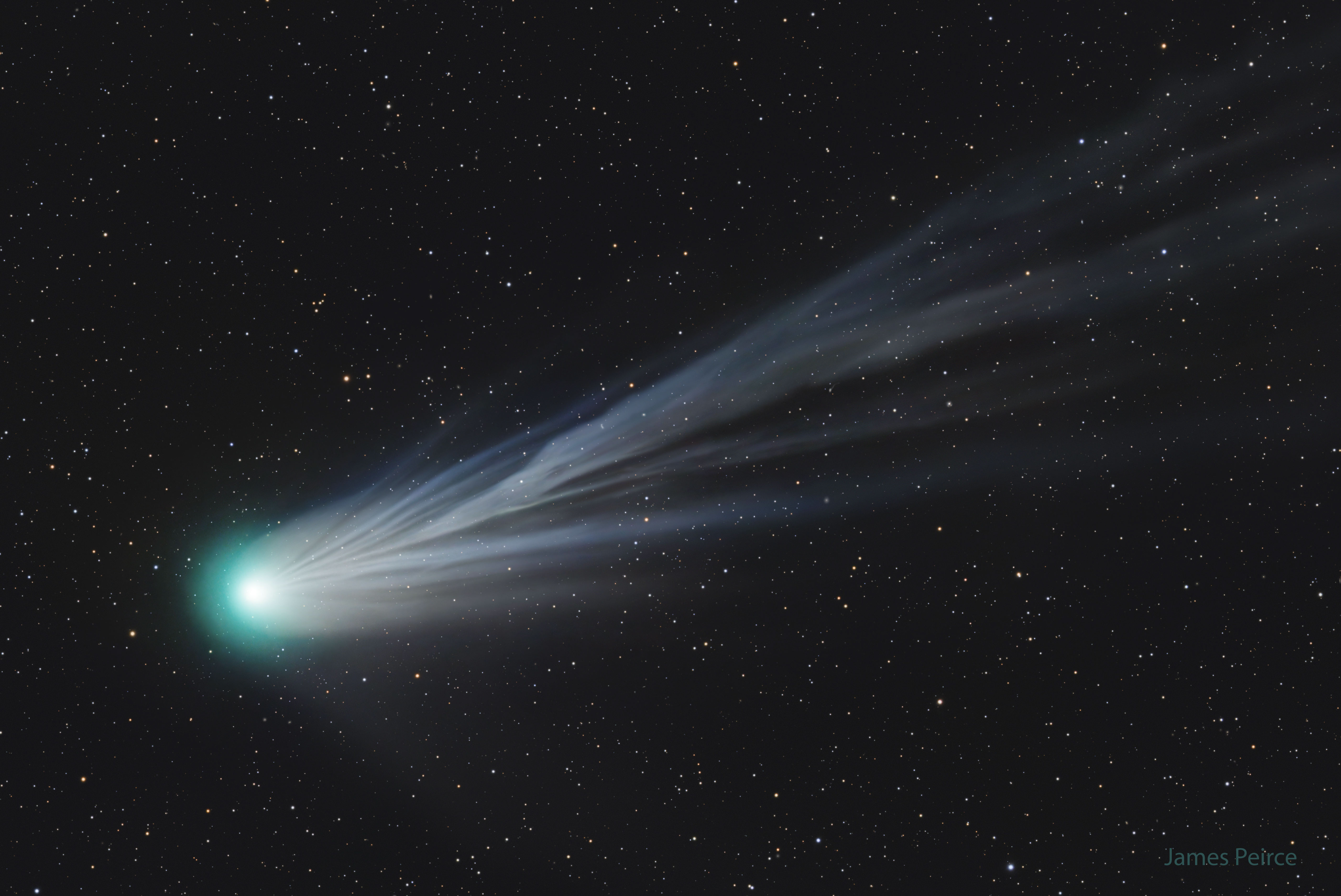
Comet Pons-Brooks is famous for its sudden outbursts. She demonstrated them at every known return to the Sun. But it did not have a particularly high observed brightness.
The point here is not the comet itself, but the relative position of the Sun, the comet and the Earth.
Comet Pons-Brooks has a very high potential. The dimensions of its nucleus are several times larger than the diameter of the nucleus of Halley's comet (with which it is invariably compared for the similarity of its orbits and orbital periods). Theoretically, it could be very bright. But four times in a row it passes perihelion on the opposite side of the Earth. Every time we observe it behind the Sun. And only the significant inclination of its orbit allows us to do this.
In all three previous returns, the comet's brightness did not exceed 3rd magnitude. Most likely this time it will be something the same. In any case, now – 20 days before perihelion – the comet has flared up only to the 4th magnitude – it can be visible to the eye, but only under ideal conditions, and only in some areas of the globe. In most locations it can be observed through binoculars or other light optics.
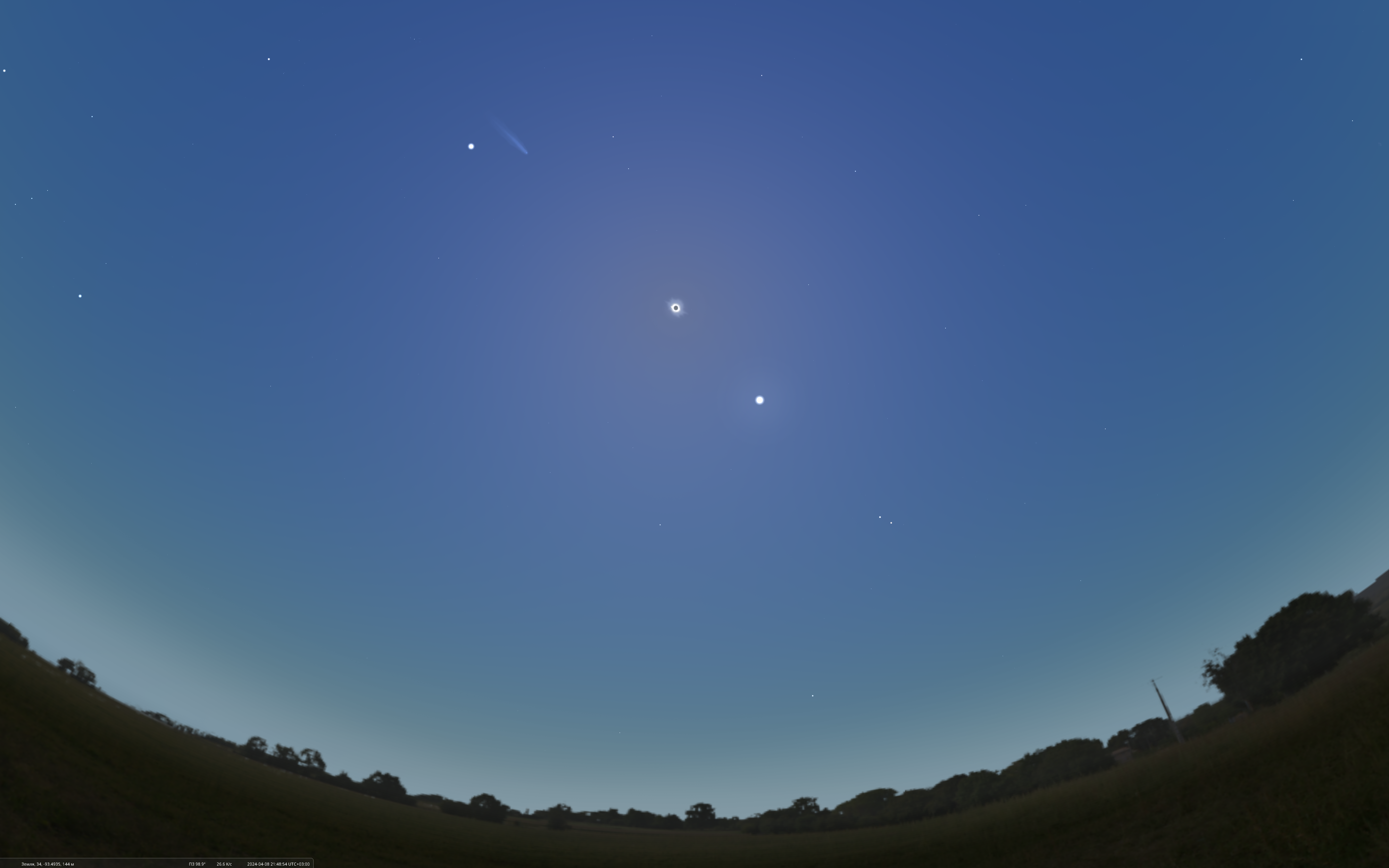
A special event in terms of the ability to see Comet Pons-Brooks with the naked eye will be a total solar eclipse on April 8, 2024, when the comet will be located only 25 degrees from the daylight star. And its estimated brightness is expected to be only slightly higher than 4m, which, of course, is not enough for observation by the eye in a bright sky, which happens during total solar eclipses.
But observers are hoping for a sudden flash of brightness.
Why not?
On its next visit, in 2095, the comet will again pass behind the Sun, and will also only reach 4th magnitude. Maybe just a little higher.
Now let's look at the comet's visibility conditions for the coming evenings
April 2, 2024
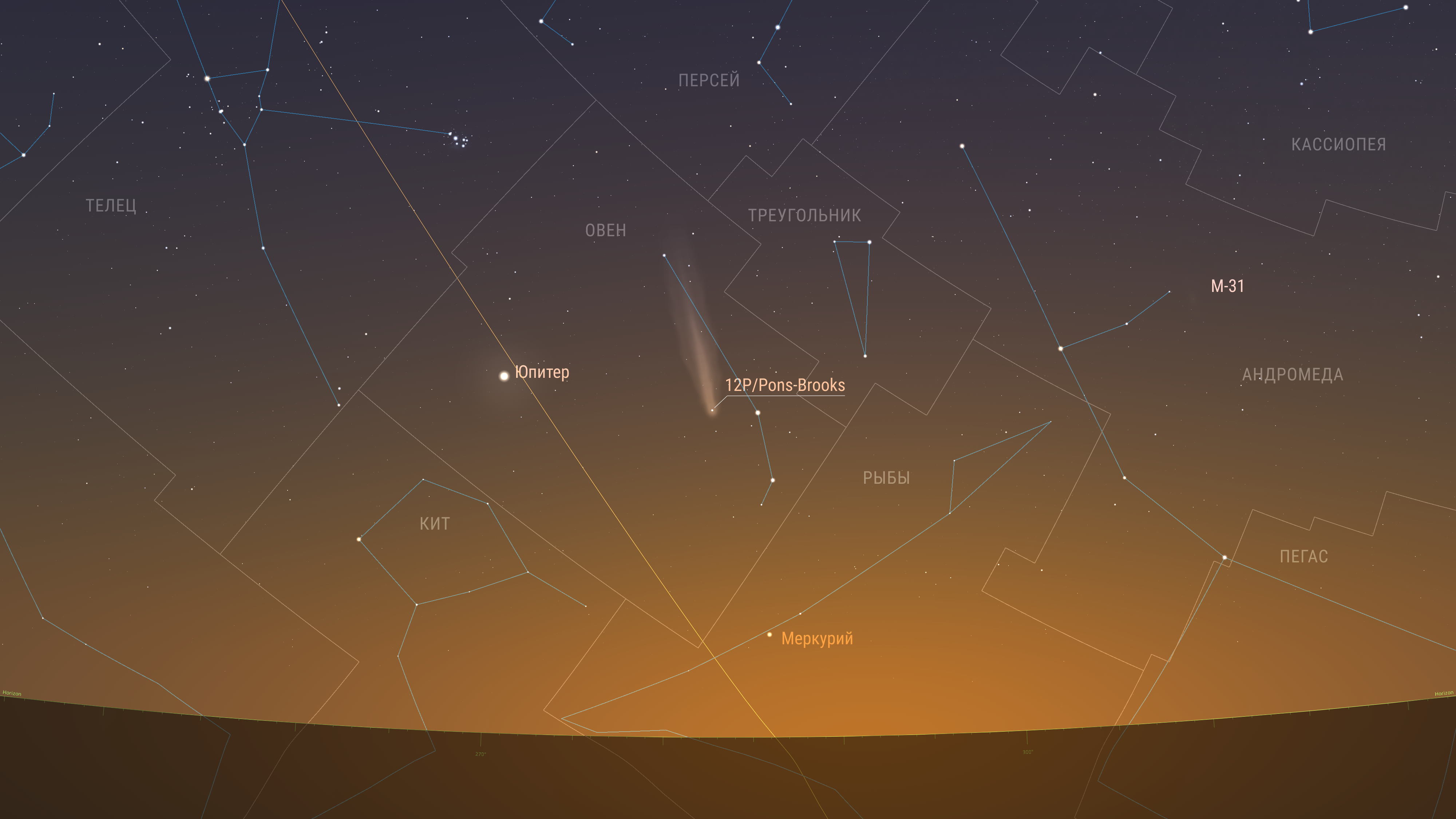
April 3, 2024
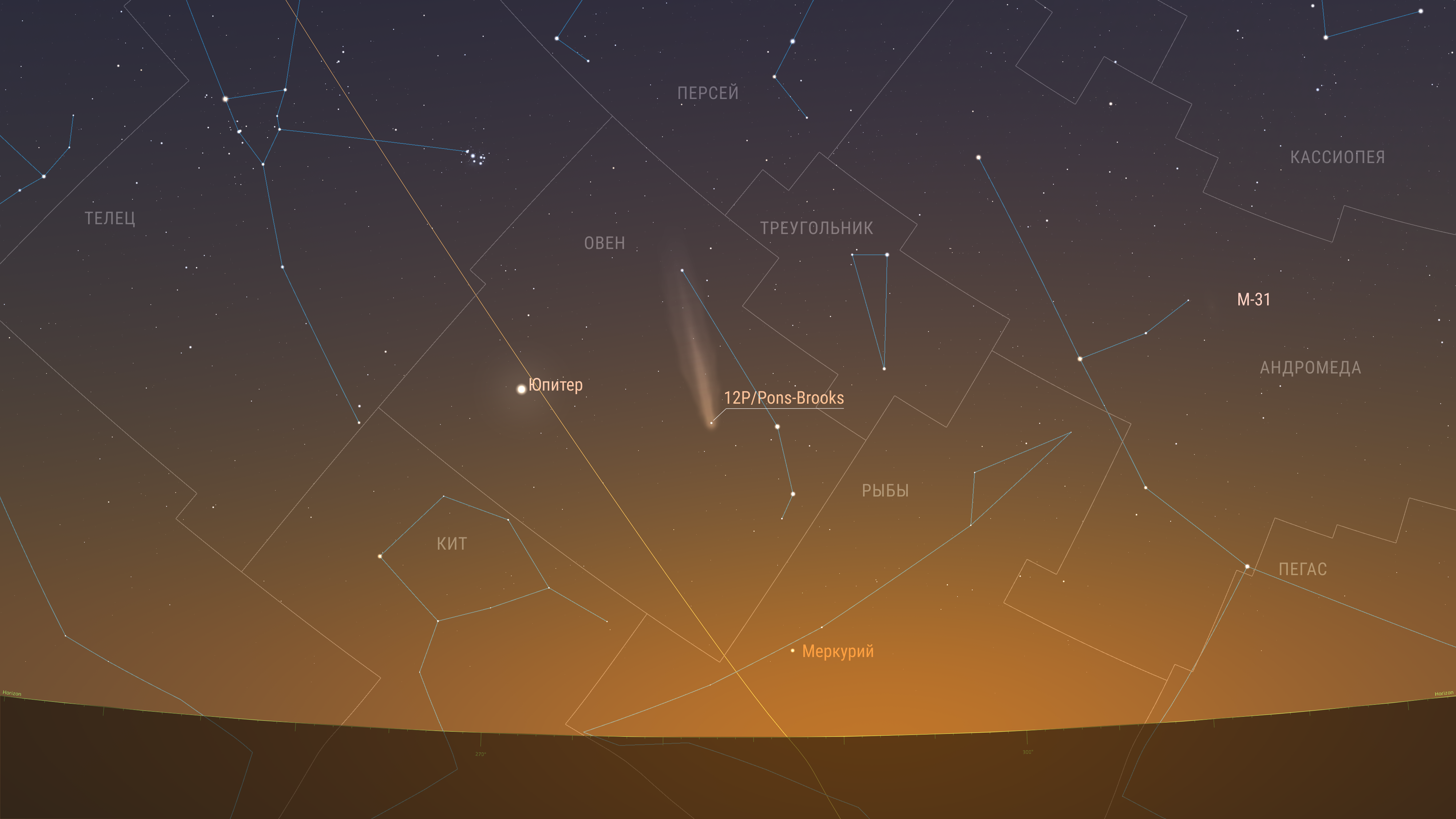
April 4, 2024

April 5, 2024
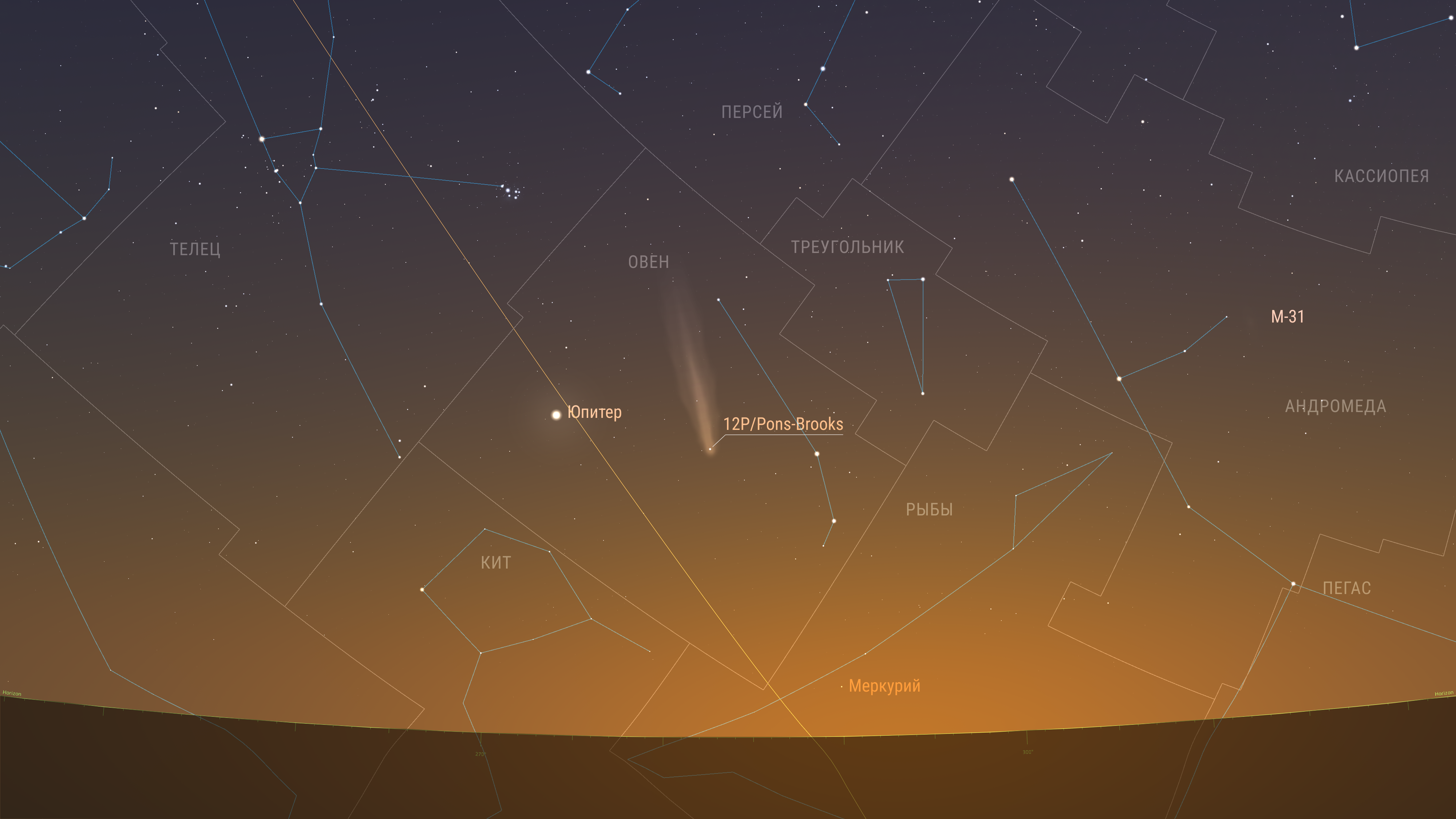
April 6, 2024
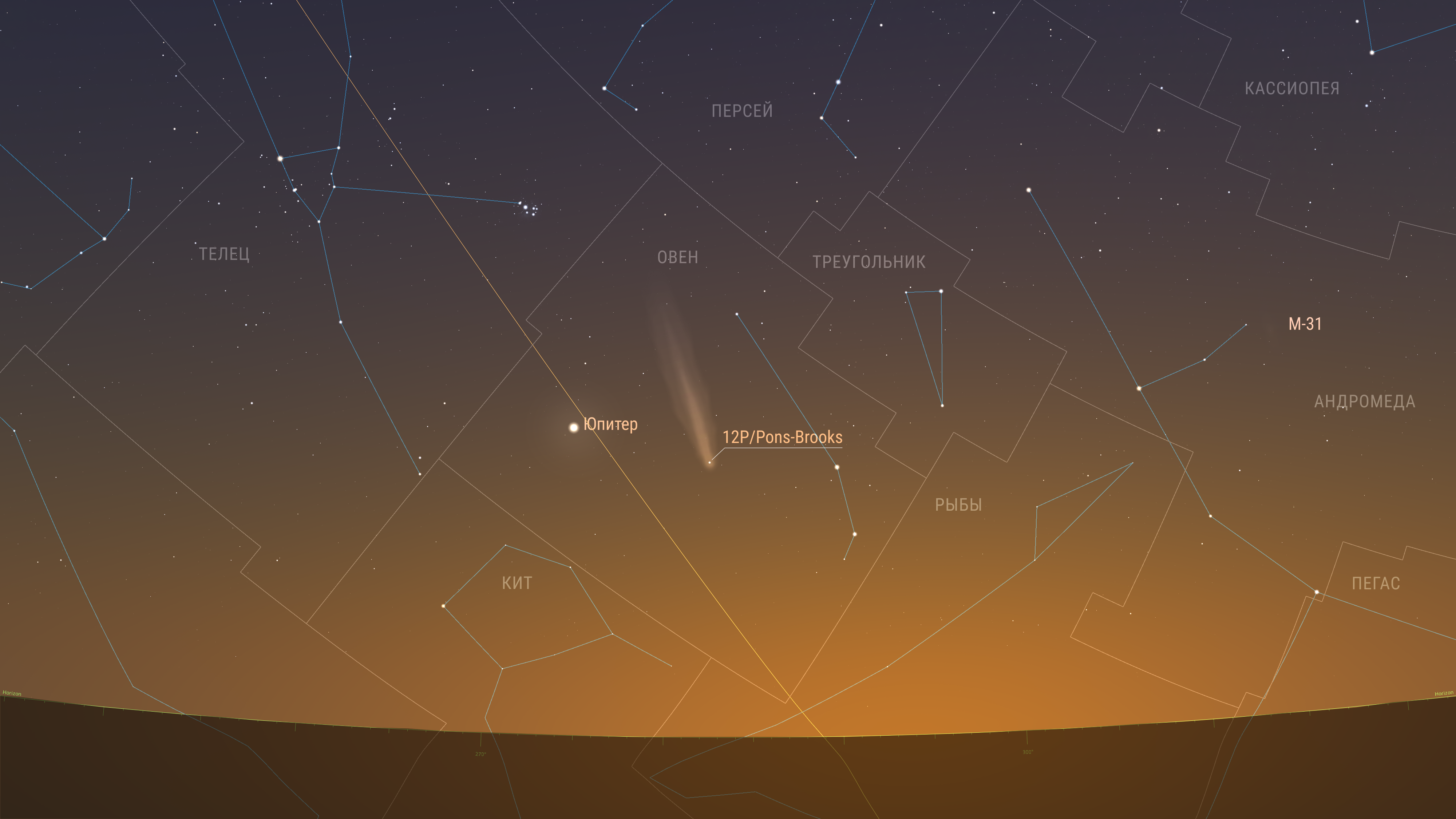
April 7, 2024

April 8, 2024
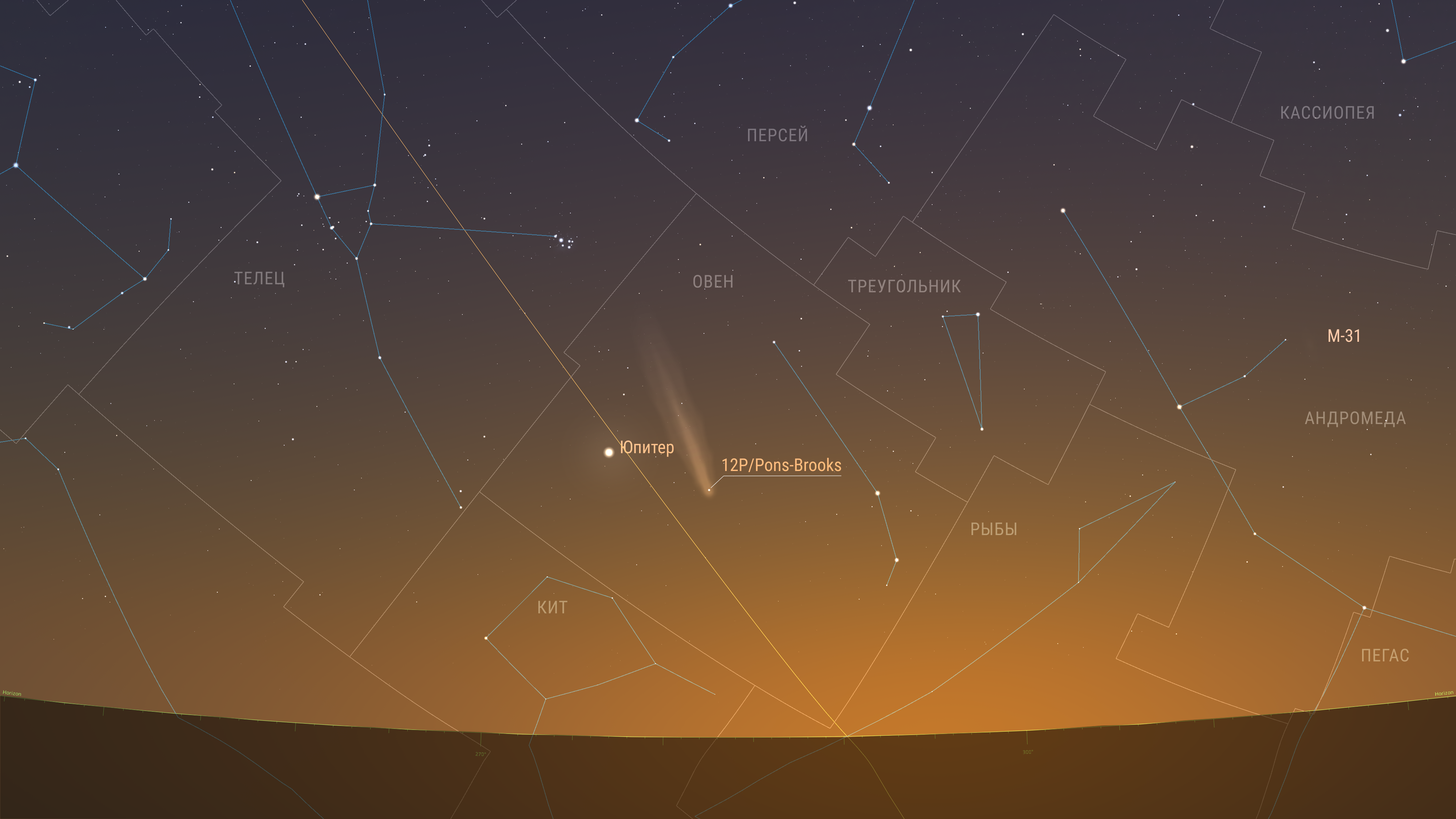

April 9, 2024
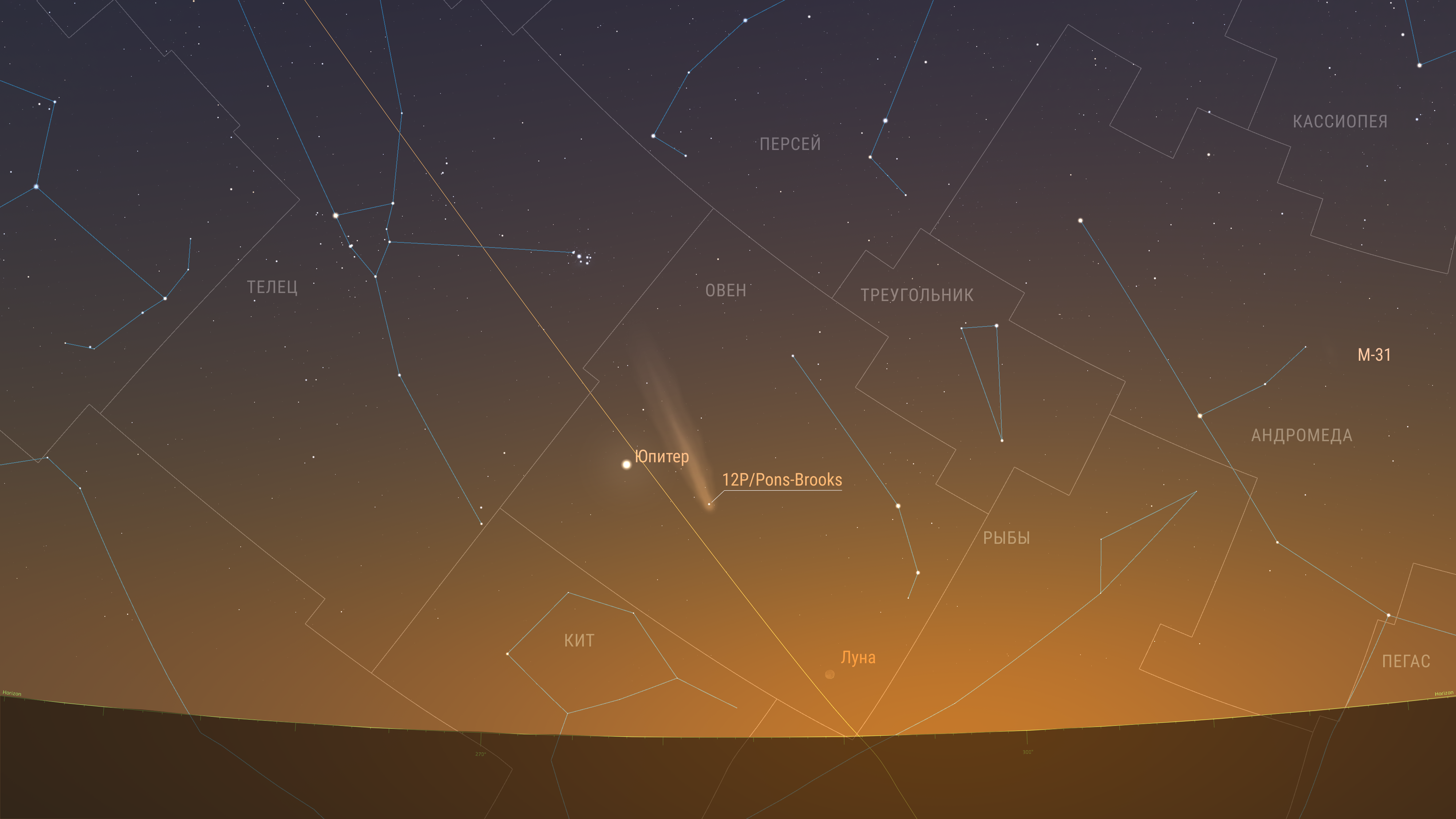
April 10, 2024
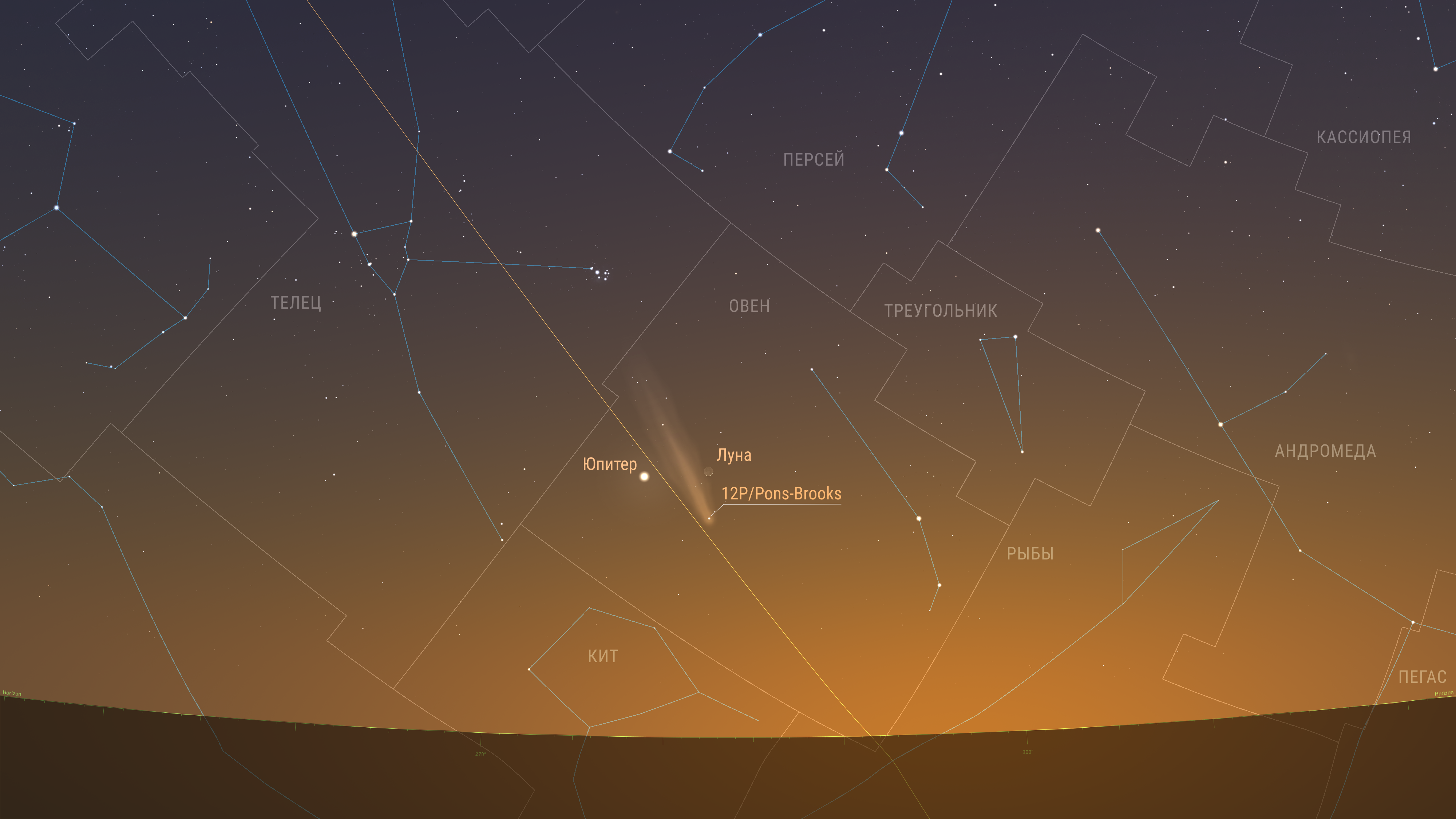
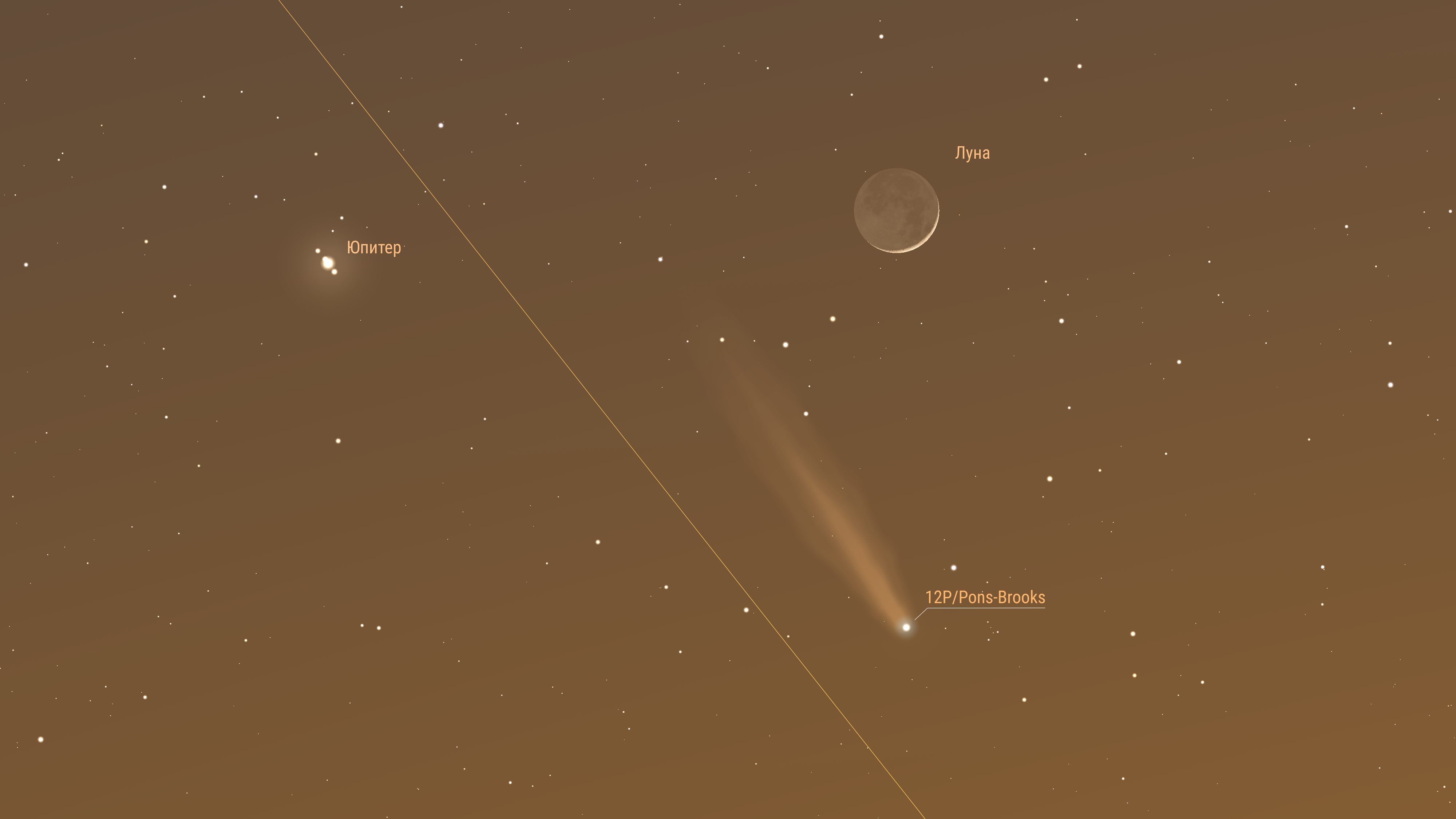
April 11, 2024
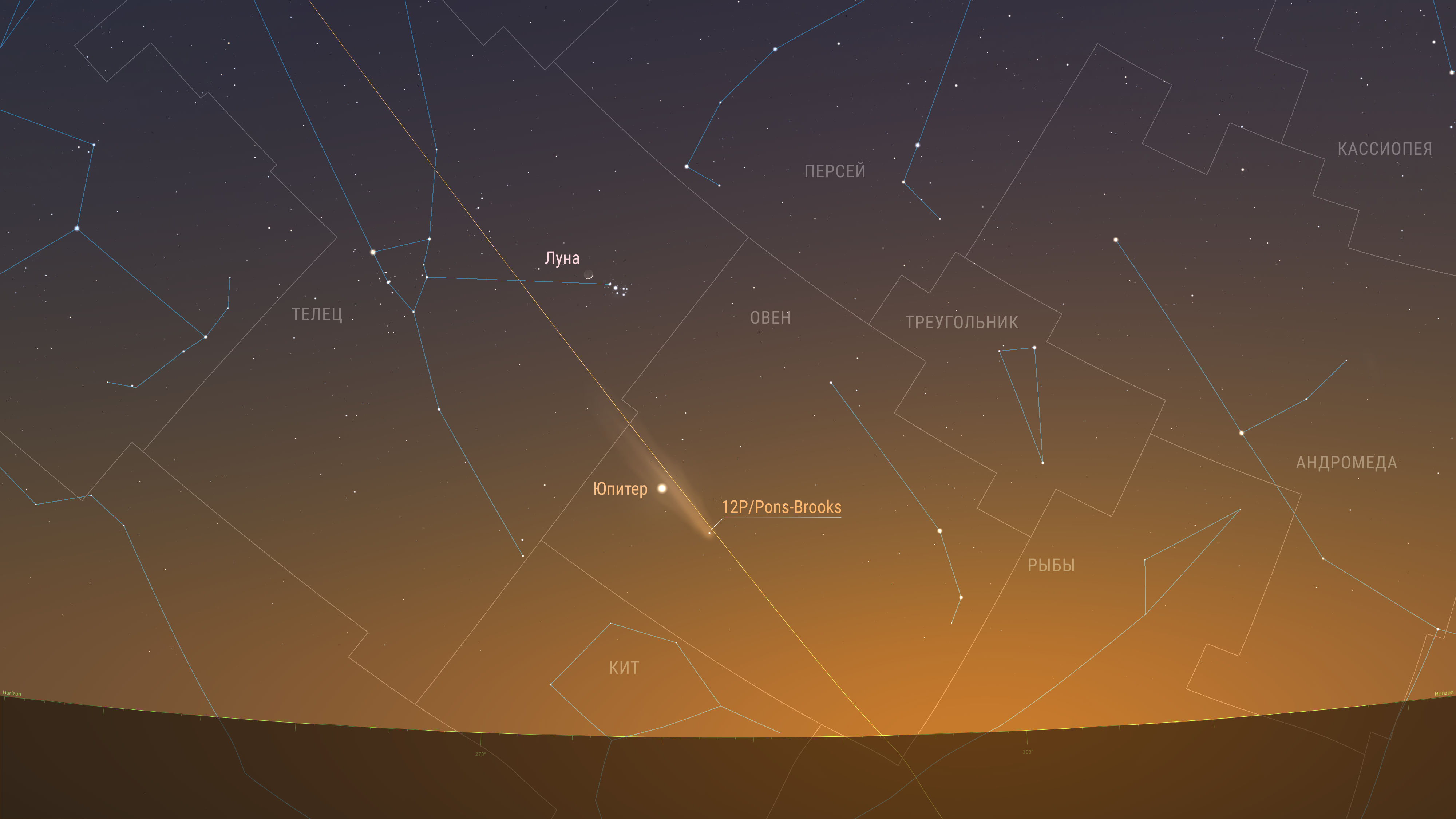
April 12, 2024
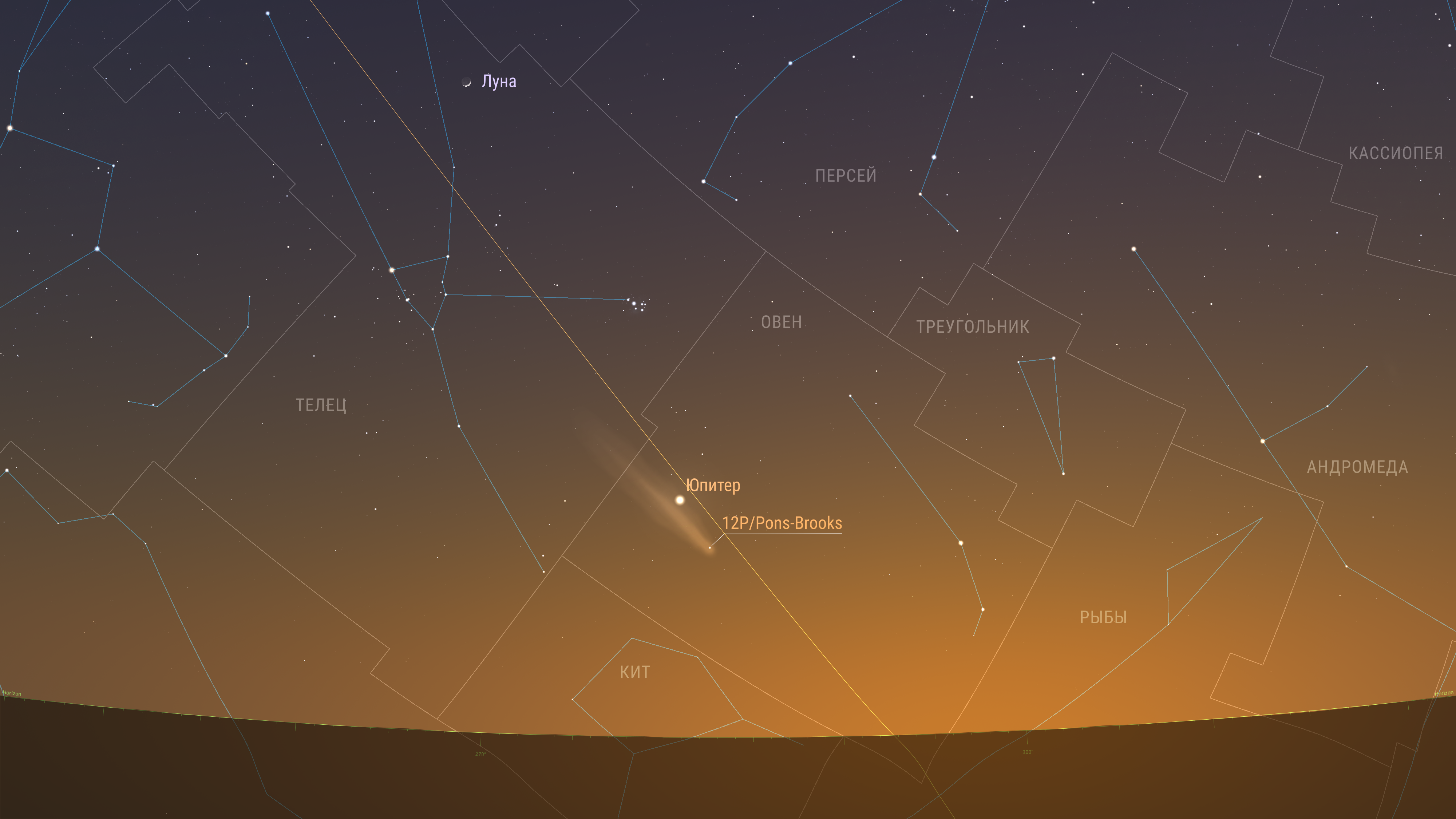
April 13, 2024
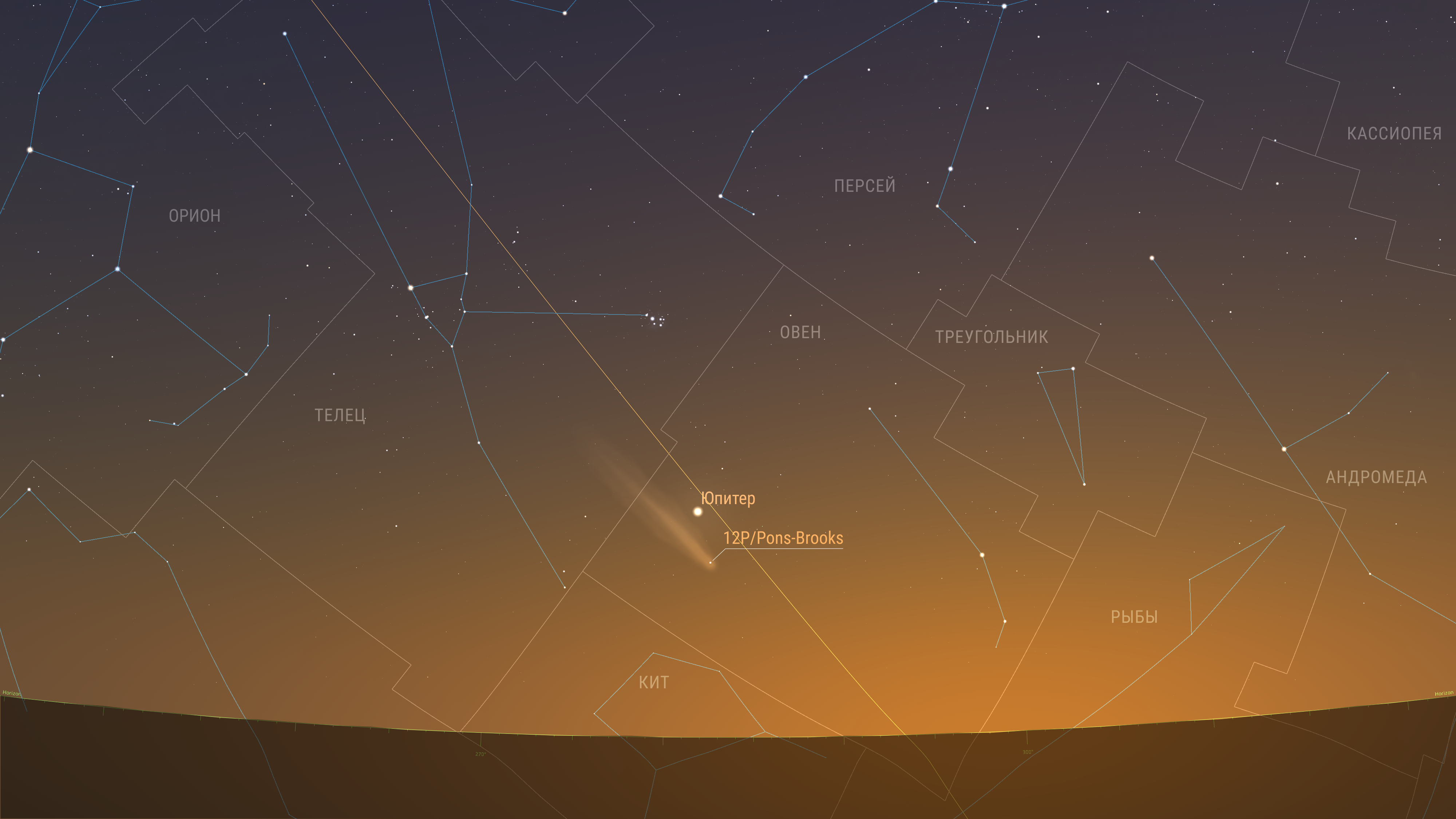
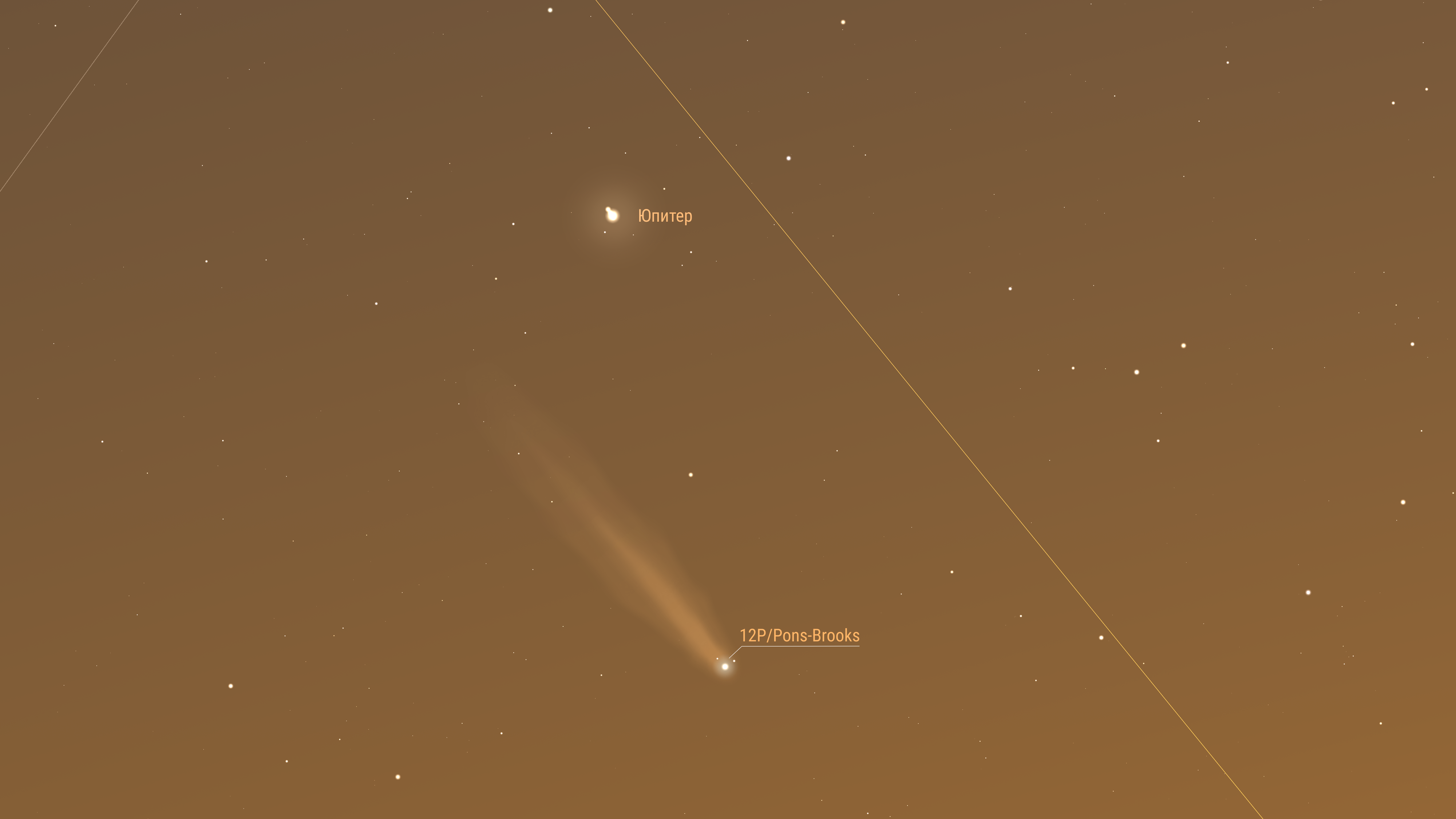
April 14, 2024
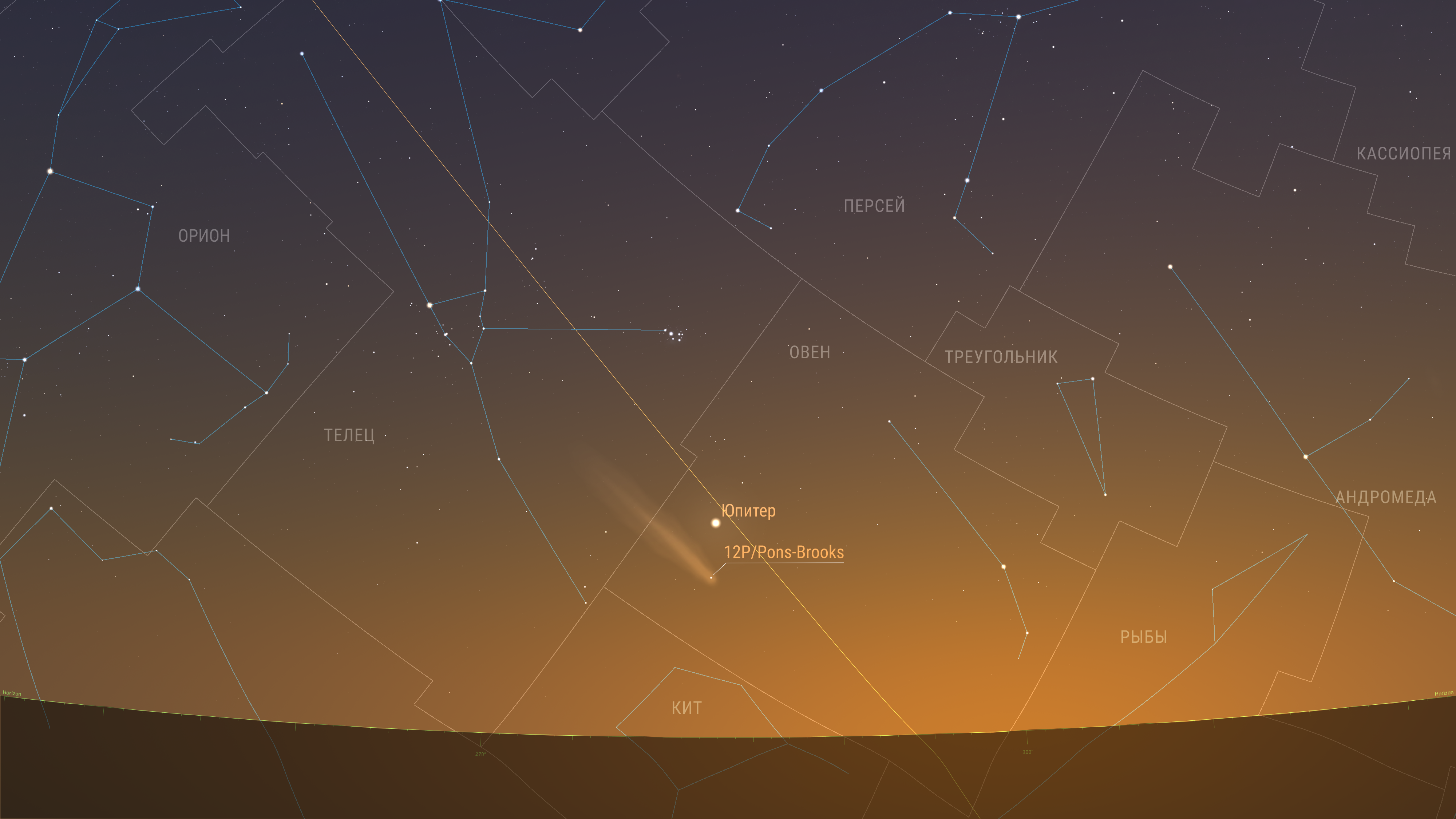
April 15, 2024
